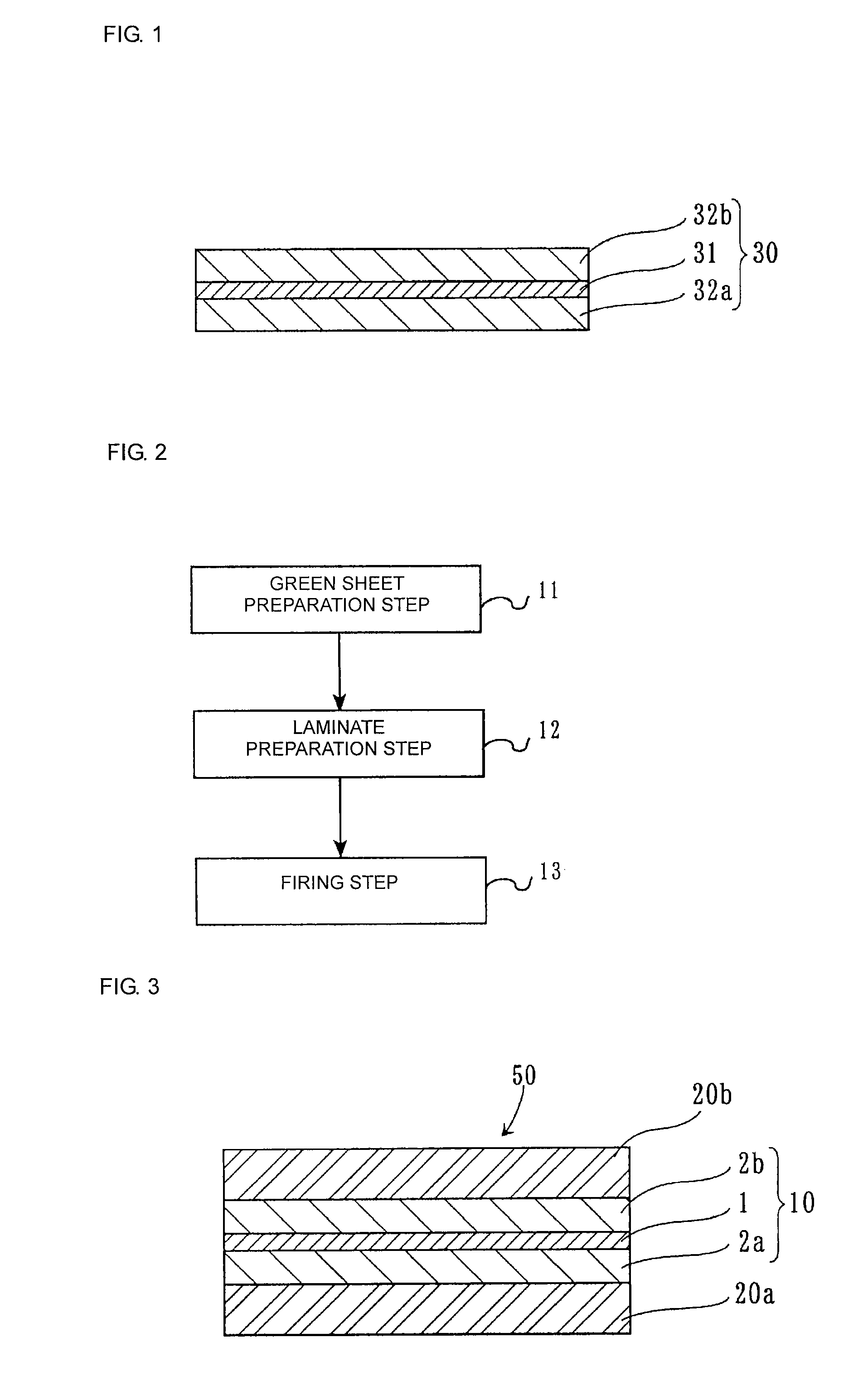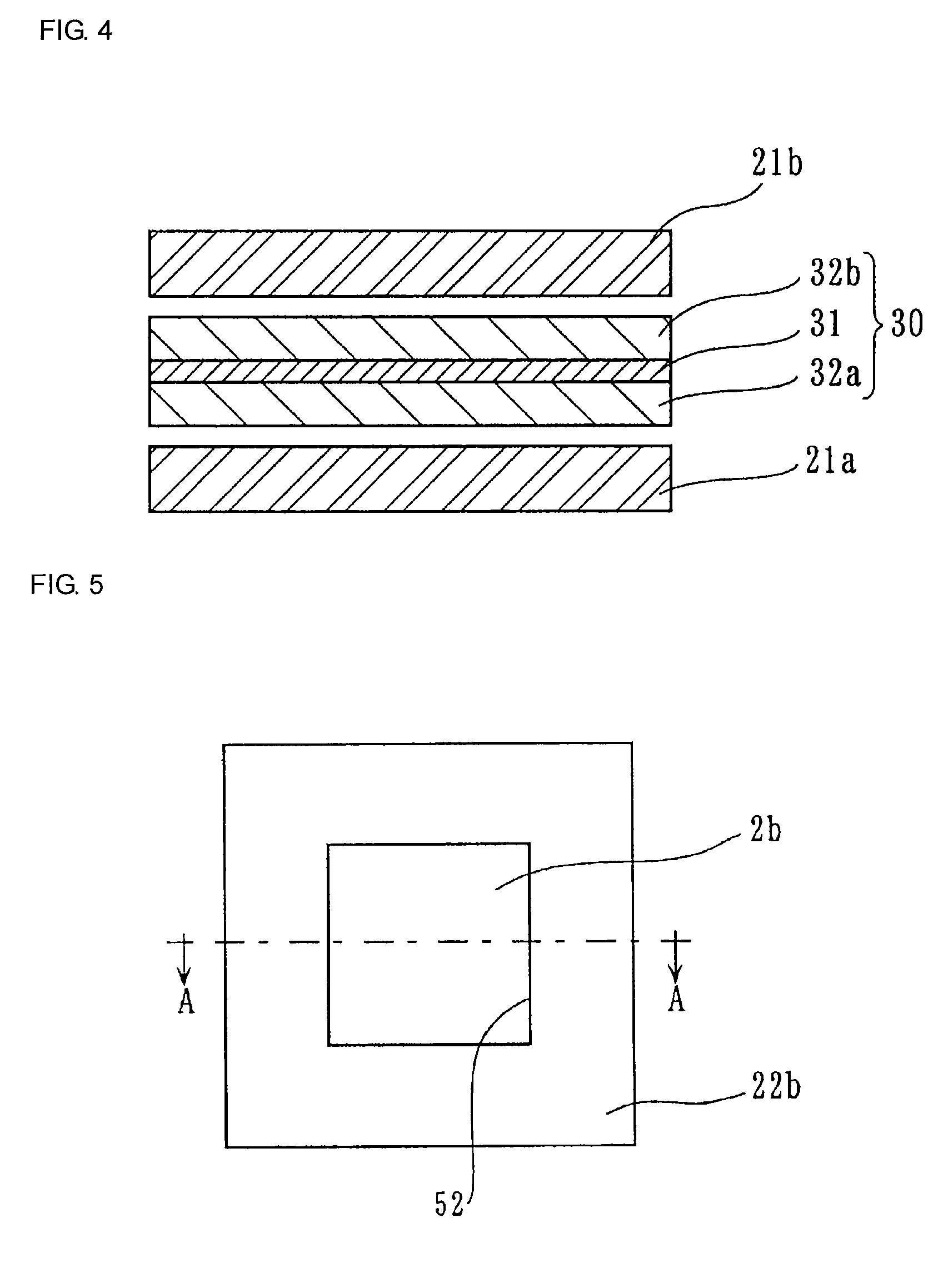Method for manufacturing thin film capacitor
a manufacturing method and capacitor technology, applied in the manufacture of capacitors, fixed capacitor details, fixed capacitors, etc., can solve the problems of high production cost, high process cost and high material cost of metal foil, and the capacitor portion would undergo warpage or undulation, etc., to achieve the effect of improving the controllability of the firing atmosphere relative to the capacitor portion, and improving the quality of the capacitor
- Summary
- Abstract
- Description
- Claims
- Application Information
AI Technical Summary
Benefits of technology
Problems solved by technology
Method used
Image
Examples
example
(1) Green Sheet Preparation Step
[0082]A dielectric ceramic powder mainly composed of (Ba, Ca) TiO3 and having an average particle diameter of 0.2 μm and an organic binder mainly composed of polyvinyl butyral resin were mixed and dispersed in an organic solvent containing toluene and ethanol at a volume ratio of 1:1 to prepare a dielectric ceramic slurry. The volume ratio of the dielectric ceramic powder to the organic binder to the organic solvent was 10:10:80. The volume of the dielectric ceramic powder was determined by measuring the weight of the dielectric ceramic powder and dividing the weight by its theoretical density. The dielectric ceramic slurry was formed into a sheet by a doctor blade technique to obtain a dielectric green sheet having a thickness of 2 μm.
[0083]A Ni powder, serving as the metal powder, having an average particle diameter of 0.5 μm and an organic binder mainly composed of polyvinyl butyral resin were mixed and dispersed in an organic solvent containing to...
PUM
| Property | Measurement | Unit |
|---|---|---|
| temperature | aaaaa | aaaaa |
| temperature | aaaaa | aaaaa |
| particle diameter | aaaaa | aaaaa |
Abstract
Description
Claims
Application Information
 Login to View More
Login to View More - R&D
- Intellectual Property
- Life Sciences
- Materials
- Tech Scout
- Unparalleled Data Quality
- Higher Quality Content
- 60% Fewer Hallucinations
Browse by: Latest US Patents, China's latest patents, Technical Efficacy Thesaurus, Application Domain, Technology Topic, Popular Technical Reports.
© 2025 PatSnap. All rights reserved.Legal|Privacy policy|Modern Slavery Act Transparency Statement|Sitemap|About US| Contact US: help@patsnap.com



